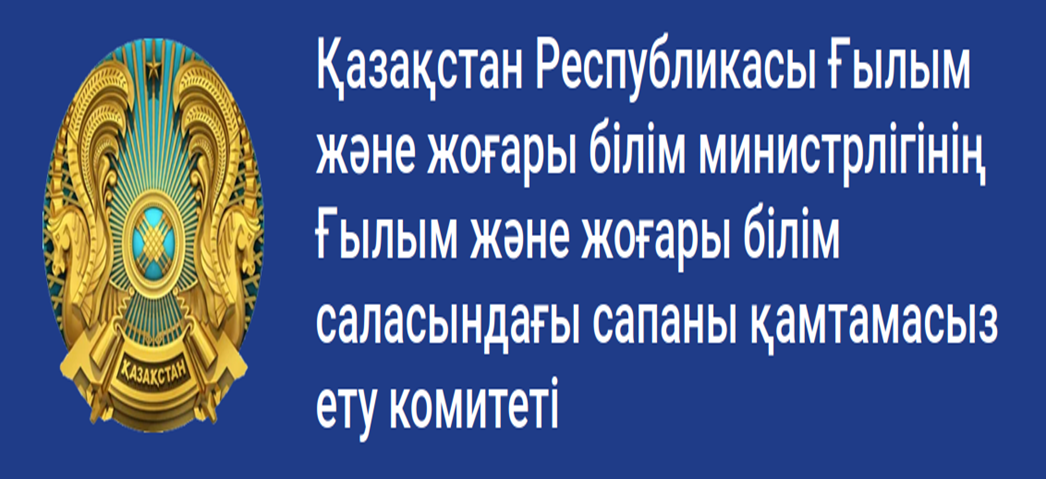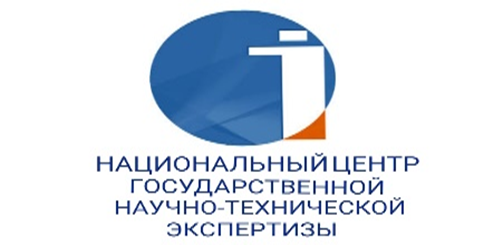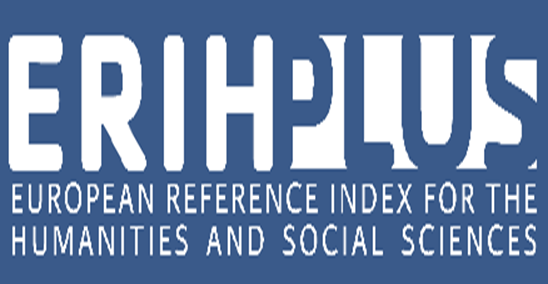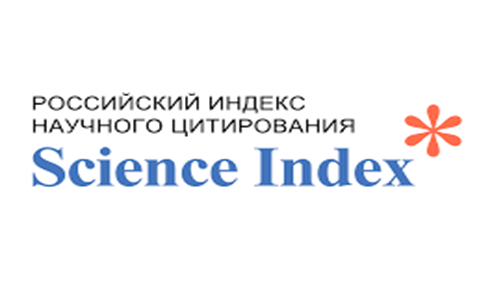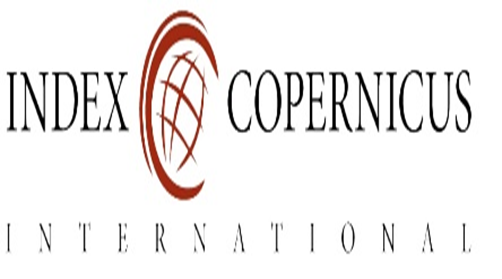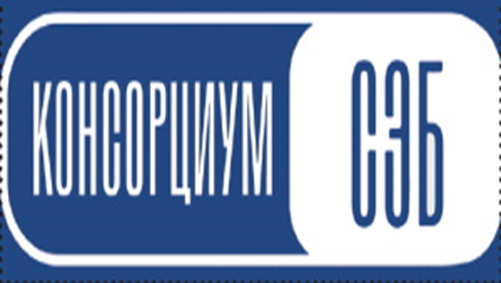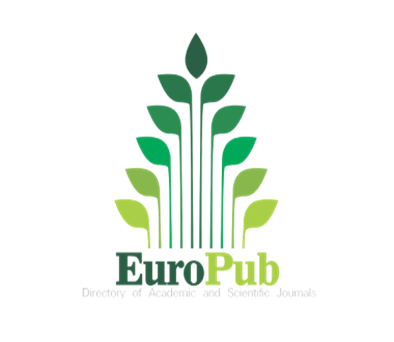Ceramic complex of the Bulandy-2 Temple: morphology, technical and technological analysis
Views: 241 / PDF downloads: 138
DOI:
https://doi.org/10.32523/2664-5157-2025-1-71-90Keywords:
archaeology, Syr Darya, Bulandy-2, temple, ceramics, morphology, technolo gical-technical analysis, clay, engobe, organic materialAbstract
This paper presents the results of an analysis of ceramics from Bulandy-2, one of Central Asia’s earliest domed structures. The site was first excavated by the Khorezm Archaeological Expedition between 1957 and 1960. The Bulandy-2 Temple has a circular shape with a diameter of 16 m and a height of 4.5 m. The entrance is located on the northern side of the structure. The presence of a wooden stretcher and a coffin during the excavations
suggests that the temple was used for burial purposes. It also points out that the site may have been employed for rituals associated with funerary practices. Researchers comparing the Bulandy-2 Temple with Central Asian cultic monuments in Bactria, Margiana, and Khorezm associate its architectural features, particularly its circular base, the cult of fire and abundance, that is characteristic of the Zoroastrian nomadic traditions of Central Asia. Moreover, similar dome-shaped structures have been found across the Eurasian steppe.
The present study draws upon a range of ceramic collections from the Bulandy-2 complex, which are currently housed in the collection of the State Museum of Oriental Art in Moscow. The primary objective of this paper is to introduce the morphological, technical and
technological characteristics of Bulandy-2 ceramics into scholarly discourse. Morphological analysis of the pottery indicates the presence of domestic and, to some extent, kitchenware. Further technical and technological analysis of the material reveals that the vessels were wheel-thrown using a mixture of dry clay, chamotte, organic matter and gypsum. The primary artificial organic additives in the moulding mass of this ceramic were dry grass and crushed straw. Large Bulandy-2 vessels were constructed using the coil-building technique. The vessels feature a rich red and brown engobe, along with and various geometric designs on their bases and rims. Researchers suggest that the markings on the ceramics may represent the potter’s personal signature, clients’ requests, indications of private ownership, reflections
of social inequality. The conducted research on the site, as well as the morphological and technological- technical analysis of the ceramics, made it possible to date the Bulandy-2 Temple to the 4th-2nd centuries.
Downloads
Reference
Байпаков К.М., Подушкин А.Н., 1989. Памятники земледельческо-скотоводческой
культуры Южного Казахстана. Алматы. 160 с.
Бобринский А.А., 1978. Гончарство Восточной Европы. Москва: Наука. 269 с.
Болелов С.Б., 2004. Керамика // Калалы-гыр 2. Культовый центр в Древнем Хорезме
IV-II вв. до. н. э. Москва: Вост. литература. 286 с., илл., карты.
Болелов С.Б., 2013. Ремесло древнего Хорезма по археологическим данным. Этапы
становления // РА. № 2. С. 77-86.
Вайнберг Б.И., Левина Л.М., 1993. Чирикрабатская культура // Низовья Сырдарьи в
древности. Москва: ИЭИА. 130 с.
Дарменов Р.Т., Утубаев Ж.Р., 2011. Баланды 2 (Буланды): культовое сооружение
чирикрабатской культуры IV-II вв. до н.э. // Материалы международной научной
конференции: «Археология Казахстана в эпоху независимости: итоги, перспективы»,
посвященной 20-летию Независимости Республики Казахстан и 20-летию Института
археологии им. А.Х. Маргулана КН МОН РК. 12-15 декабря. Алматы. С. 157-161.
Калиева Ж.С., Утубаев Ж.Р., Суюндикова М.К., 2024. Особенности формовочных
масс и обжига керамики чирикрабатской культуры по результатам экспериментальных
исследований // Материалы по археологии и истории античного и средневекового
Причерноморья (№17). С.164-182.
Қасиетті Қазақстан [Электрондық ресурс]: энциклопедия. 3-том., 2019. Жамбыл
облысы. Қарағанды облысы. Қостанай облысы. Қызылорда облысы / Құраст.: А.Екімбаева,
Г.Шауенова. Нұр-Сұлтан. 378 б.
Құрманқұлов Ж., Утубаев Ж.Р., 2013. Баланды (Бұланды) антикалық ескерткіш.
Алматы: Хикари. 148 б.
Қызылорда облыстық тарихи-мәдени ескерткіштерді қорғау жөніндегі мемлекеттік
мекемесінің ресми интернет ресурсы. http://virtualmap.xyz. (18.01.2025).
Сүйіндікова М.Қ., Утубаев Ж.Р., 2021. Бәбіш мола кешенінің керамикалық
материалдары (2020 жылғы қазба бойынша) // «Оразбаев Оқулары» Халықаралық
ғылыми-әдістемелік конференциясы. Алматы «Қазақ университеті». Б. 76-83.
Сүйіндікова М.Қ., 2022. Бәбіш мола 7 көзешілер елді мекенінің керамикалық
материалдары (2021 жылғы қазба бойынша) // Ақынжанов оқулары-2022: студенттер
мен жас ғалымдардың халықаралық ғылыми конференция материалдары (Алматы қ,.
–22 сәуір 2022 ж.). Алматы: Ә.Х. Марғұлан ат. Археология институты. Б. 15-18
Подушкин А.Н., 2017. Тамгообразные знаки из катакомб арысской культуры Южного
Казахстана ІІІ в. до н.э. – IV в.н.э. //Үлкен Алтай əлемі – Мир большого Алтая–World of
Great Altay 3(4) ISSN2410-2725. С. 60-101.
Толстов С.П., 1962. По древним дельтам Окса и Яксарта. Москва: Изд-во восточной лит
ры. 324 с.
Толстов С.П., Вайнберг Б.И., 1967. Кой-Крылган-кала: памятник культуры древнего
Хорезма IV в. до н.э. – IV в.н.э. Москва: Изд-во «Наука». 466 с.
Толстов С.П., Жданко Т.А., Итина М.А., 1963. Работы Хорезмской археолого
этнографической экспедиции АН СССР в 1958-1961 гг. // МХЭ. Вып. 6. Москва. С. 67-72.
Утубаев Ж.Р., 2013. Погребальные сооружения Баландинского оазиса // Известия
НАН РК. Серия общественных и гуманитарных наук. № 3 (289). 2013. С. 28-35.
Утубаев Ж.Р., Болелов С.Б., Касенова А.Д., 2023. Бабиш-мола – столичный город
эпохи античности в низовьях Сырдарьи: стратиграфия, периодизация, хронология.
Stratum Plus. Археология и культурная антропология. №3. С. 179-201.
Утубаев Ж., Болелов С., Калиева Ж., Суюндикова М.К., Касенова А., 2023.
Экспериментальные работы по изготовлению керамики Чирикрабатской культуры
Поволжская археология № 3 (45). С. 235-247.
Утубаев Ж.Р., Ерсариев А.М., Суюндикова М.К., Касенова А.Д., 2023. Бұланды (Баланды)
фортификациясын зерттеу нәтижелері // Turkic Studies Journal. Т. 5. № 2. Б. 49-66.
Утубаев Ж.Р., Суюндикова М.К., Касенова А.Д., 2020. Бәбіш мола 7 көзешілер елді
мекеніндегі қыш ыдыстар // Отан тарихы. Ғылыми журналы №2 (90). Б. 157-168.
Утубаев Ж., Суюндикова М., 2021. Бәбіш мола көзешілер елді мекенінің керамикадағы
таңба тәрізді белгілері // Мәдени мұра ғылыми журналы. № 1(92). Б. 10-20.
Утубаев Ж.Р., Суюндикова М.Қ., 2023. ХІХ–ХХ ғғ. Сырдарияның төменгі ағысындағы
археологиялық зерттеулер. Қазақстан археологиясы. №3 (21). Б. 48-67.
Цетлин Ю.Б., 2017. Керамика: понятия и термины историко-культурного подхода.
Москва. ИА РАН. 81 с.
Яценко С.А., 2001. Тамги ираноязычных народов древности и раннего средневековья.
Москва. Восточная литература «РАН». 190 с.
REFERENCE
Baypakov K.M., Podushkin A.N., 1989. Pamyatniki zemledelchesko-skotovodcheskoy kultury Yuzhnogo Kazakhstana. [Monuments of agricultural and pastoral culture of Southern Kazakhstan]. Almaty. 160 p. [in Russian].
Bobrinskii A.A., 1978. Goncharstvo Vostochnoi Evropy [Pottery of Eastern Europe]. Moscow: Nauka. 269 p. [in Russian].
Bolelov S.B., 2004. Keramika [Ceramics]. Moscow: Vost. Literatura. 286 p., ill., karty. [in Russian].
Bolelov S.B., 2013b. Remeslo drevnego Horezma po arheologıcheskım dannym. Etapy Stanovlenııa [Craft of ancient Khorezm according to archaeological data. Stages formation]. RA. No 2. P. 77-86. [in Russian].
Vainberg B.I., Levina L.M., 1993. Chirikrabatskaya kultura. Nizovya Syrdari v drevnosti [Chirikrabat culture. The lower reaches of the Syr Darya in ancient times]. Moscow: İEA RAN. vyp. I. 130 p. [in Russian].
Darmenov R.T., Utubayev Zh.R., 2011. Balandy 2 (Bulandy) kultovoe soorujenie chirikrabatskoi kulturi IV-II vv. do n.e. [Balandy 2 (Bulandy): a religious building of the Chirikrabat culture of the IV-II centuries BC.]. Almaty. P. 157-161. [in Russian].
Kaliyeva Zh.S., Utubayev Zh.R., Suyundikova M.K., 2024. Osobennosti formovochnih mass i objiga keramiki chirikrabadskoi kulturi po rezultatam eksperimentalnih issledovanii [Features of molding masses and firing of ceramics of the Chirikrabat culture according to the results of experimental studies]. Proceedings in Archaeology and History of Ancient and Medieval Black Sea Region. No17. P.164-182. [in Russian].
Kasiettі Kazakstan [Elektrondiқ resurs] enciklopediya. 3 tom. 2019. Jambyl oblysy. Karagandi oblysy. Kostanai oblysy. Kyzylorda oblysy [Sacred Kazakhstan [Electronic resource]: encyclopedia.] / Kurast. A.Ekіmbaeva, G.Shauenova. Nur-Sultan. 378 p. [in Kazakh].
Kurmankulov Zh., Utubayev Zh.R., 2013. Balandy (Bulandy) antikalik eskertkіsh. [The ancient monument of Balanda (Bulandy)]. Almaty: Hikari. 148 p. [in Kazakh, in Russian ].
Kyzylorda oblystyk tarihi madeni eskertkіshterdі korgau jonіndegі memlekettіk mekemesіnіn resmi internet resursi. [The official Internet resource of the Kyzylorda Regional State Institution for the Protection of Historical and Cultural Monuments]. http://virtualmap.xyz. (18.01.2025).Suyundikova M.K., Utubayev Zh.R., 2021. Babіsh mola keshenіnіn keramikalyk material-dary (2020 zhylgy kazba boiynsha). [Ceramic materials of the babish Mola complex (based on excavations in 2020)]. Almaty: Kazakh universitetі. P. 76-83. [in Kazakh].
Suyundikova M.K., 2022. Babіsh mola 7 kozeshіler eldі mekenіnіn keramikalik materialdari (2021 zhylgy kazba boiynsha) [Ceramic materials of Babish Mola settlement 7 (based on excavations in 2021)] Almaty: Margulan Institute of Archaelogy. P. 15-18. [in Kazakh].
Podushkin A.N., 2017. Tamgo-obraznyye znaki iz katakomb arysskoy kultury Yuzhnogo Kazakhstana ІІІ v. do n.e.- IV v.n.e. [Tamga-shaped signs from the catacombs of the Arys culture of Southern Kazakhstan, 3rd century BC - 4th century AD]. Ulken Altay alemi – Mir bolshogo Altaya–World of Great Altay 3(4) ISSN2410-2725. P. 60-101. [in Russian].
Tolstov S.P., 1962. Po drevnim deltam Oksa i Iaksarta [Along the ancient deltas of the Oxus and Jaxartes]. Moscow: Vostochnoi literatury. 324 p. [in Russian].
Tolstov S.P., Vainberg B.I., 1967. Koi_Krilgan_kala_ pamyatnik kulturi drevnego Horezma IV v. do n.e.-IV v.n.e. [Koi-Krylgan-Kala: a cultural monument of ancient Khorezm of the IV century BC-IV century AD]. Moscow: Nauka. 466 p. [in Russian].
Tolstov S.P., Zhdanko T.A., Itina M.A., 1963. Raboty Horezmskoi arheologo-etnograficheskoi ekspeditsii AN SSSR v 1958-1961 gg [The works of the Khorezm Archaeological and Ethnographic Expedition of the USSR Academy of Sciences in 1958-1961.]. Moscow. Vyp. 6. P. 67-72. [in Russian].
Utubayev Zh.R., 2013. Pogrebalnie soorujeniya Balandinskogo oazisa [Funerary structures of the Balandinsky oasis]. Kazakstan Respublikasi UGA Khabarshisi [Proceedings of the National Academy of Sciences of the Republic of Kazakhstan]. No3 (289). P. 28-35. [in Russian].
Utubayev Zh.R., Bolelov S.B., Kasenova A.D., 2023. Babiş-mola – stolichnyi gorod epohi antichnosti v nizoväh Syrdäri: stratigrafia, periodizasia, hronologia [Babish-mola is the capital city of the antiquity era in the lower reaches of the Syr Darya: stratigraphy, periodization, chronology]. Stratum Plus. Arheologia i külturnaia antropologia. No3. P. 179-201. [in Russian].
Utubayev Zh., Bolelov S., Kaliyeva Zh., Suyundikova M.K., Kasenova A., 2023. Eksperimentalnye raboty po izgotovleniu keramiki Chirikrabatskoi kultury [Experimental work on the manufacture of ceramics of the Chirikrabat culture]. Povoljskaia arheologia No 3 (45). P. 235-247. [in Russian].
Utubayev Zh.R., Yersariyev A.M., Suyundikova M.K., Kasenova A.D., 2023. Bulandi (Balandi) fortifikaciyasin zertteu natijelerі [The results of the Balanda fortification study]. Turkic Studies Journal. T.5. No 2. P. 49-66. [in Kazakh].
Utubayev Zh.R., Suyundikova M.K., Kasenova A.D., 2020. Babіsh mola 7 kozeshіler eldі mekenіndegі kish idistar [Ceramics settlement of Babish mola 7]. Otan tarihi. Gilimi jurnali No2 (90). P. 157-168. [in Kazakh].
Utubayev Zh.R., Suyundikova M.K., 2021. Babіsh mola kozeshіler eldі mekenіnіn keramikadagi tanba tarіzdі belgіlerі [Symbols resembling marks in the ceramics of Bäbish Mola Közeshiler settlement]. Madeni mura gilimi jurnali [Cultural Heritage Scientific Journal]. No 1 (92). P. 10-20. [in Kazakh].
Utubayev Zh., Suyundikova M.K., 2023. XIX-XX gg. Syrdarianyn tomengı agysyndagy arheologialyq zertteuler [Archaeological research in the lower reaches of the Syr Darya XIX-XX centuries]. Kazakstan Arheologiasy. No 3 (21). P. 48-67. [in Kazakh].
Cetlin Yu.B., 2017. Keramika: ponyatiya i termini istoriko kulturnogo podhoda [Ceramics: concepts and terms of the historical and cultural approach]. Moscow. 2017. IA RAN. P. 81. [in Russian].
Yatsenko S.A., 2001. Tamgi iranoyazychnykh narodov drevnosti i rannego srednevekov’ya [Tamgas of Iranian-speaking peoples of antiquity and early middle ages] Moscow. Vostochnaya literatura «RAN». 190 p. [in Russian].
Downloads
Published
How to Cite
Issue
Section
License
Copyright (c) 2025 Turkic Studies Journal

This work is licensed under a Creative Commons Attribution-NonCommercial 4.0 International License.






